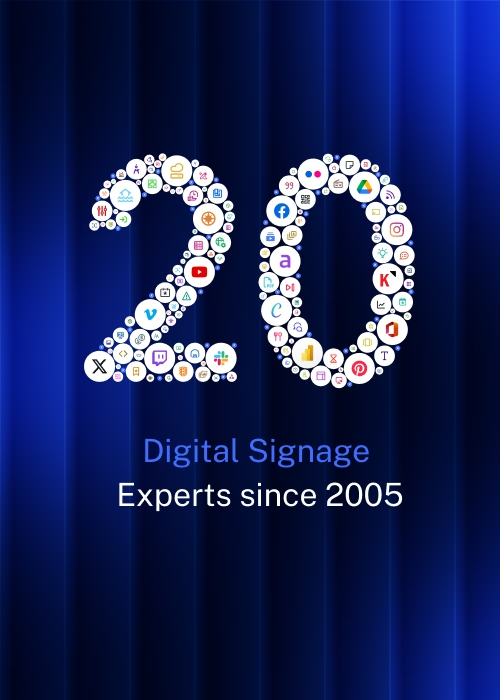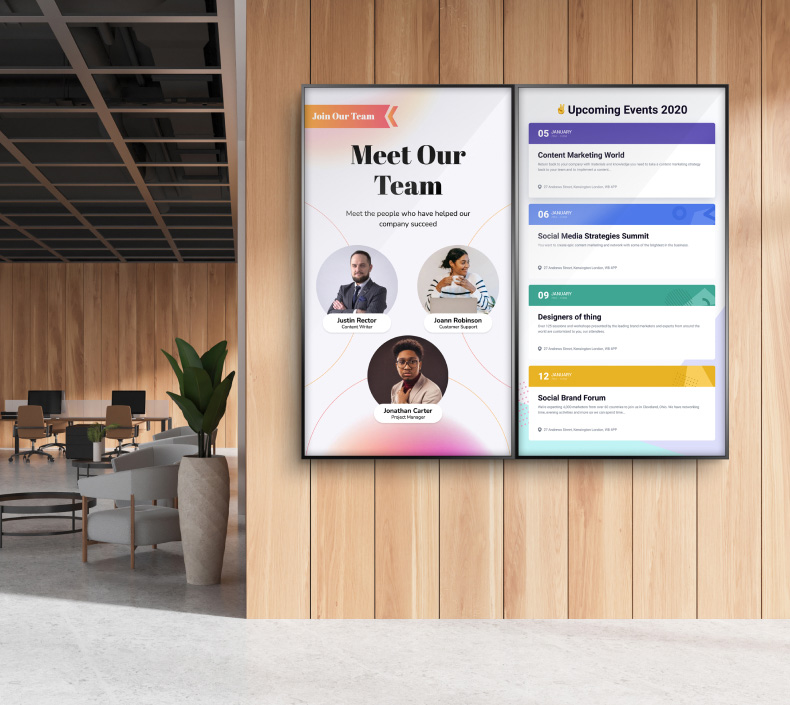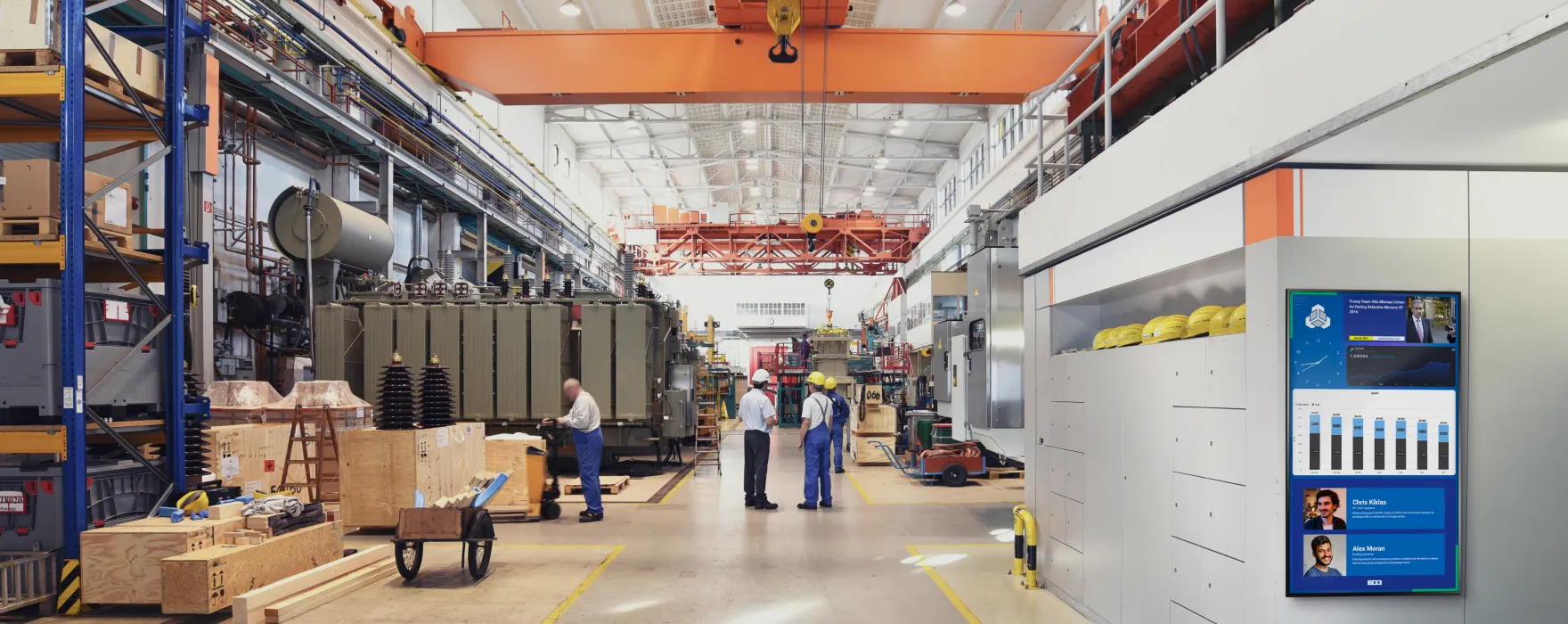Tips & Strategies For Improving Digital Signage Engagement

Digital signage engagement refers to how effectively a digital display captures attention, holds interest, and prompts action. This goes far beyond simply playing content on a screen. Strong engagement helps businesses build connections with their audiences and directly influence behavior in physical environments.
For organizations using digital signage, improved engagement leads to measurable returns. Whether it results in more purchases, higher participation, increased awareness, or better communication, digital signage becomes a powerful tool for results.
This article outlines proven strategies to help you maximize digital signage engagement. You will learn how to design better content, use interactive features, apply real-time data, and continuously improve your signage performance.
Understanding Engagement in Digital Signage
Effective engagement with digital signage means the content is doing its job. That could mean stopping someone in their tracks to watch a message or guiding them toward taking action like scanning a code or entering a space.
There are two primary types of engagement. Passive engagement occurs when viewers observe and absorb the content without interacting. For example, a person reading a display in a lobby or catching a promotional message in a store window. Active engagement involves direct response or interaction. That could include using a touchscreen, scanning a QR code, or responding to an on-screen prompt.
Three main factors influence digital signage engagement: the environment, the content, and the placement. Screens placed at eye level in high-traffic areas will always outperform poorly positioned displays. A well-lit, quiet space will help people focus on content more easily. And if the content is relevant, visually appealing, and timely, viewers are more likely to engage.
Optimize Content for the Viewer
To boost digital signage engagement, always start with the audience. Understand who they are, what they care about, and what they need in that moment. For example, office employees walking through a break room may benefit from real-time company updates. Shoppers near a checkout line may respond best to impulse-buy promotions.
Design is critical. Use large fonts, clean layouts, and strong contrast. Keep your messaging simple. Aim for five to seven words when possible. If your audience is moving quickly, you have only a few seconds to get your point across. Use visuals that support your message rather than distract from it.
Avoid overloading the screen with information. Each screen should have one clear message. If you want to show more than one message, rotate them in timed intervals rather than cramming them all into one layout.
Most importantly, update content often. A study found that 83 percent of people recall content better when it changes regularly. Fresh content keeps viewers interested and coming back. Rotate promotions, highlight current events, or refresh internal communications based on new data.
Incorporate Interactivity
Interactive signage is one of the fastest ways to increase viewer attention and participation. By giving people a way to engage with the content, you turn a passive viewer into an active participant.
Examples include:
- Touchscreen directories or wayfinding maps
- QR codes that offer deals, app downloads, or additional info
- Games, contests, or surveys that allow users to participate
These features give people a reason to stop and engage. In fact, interactive signage has been shown to increase engagement by up to 50 percent compared to non-interactive displays.
Design simplicity matters. Make sure interactive elements are easy to use and clearly labeled. If users get confused or frustrated, they will walk away. Also ensure the experience is accessible for all users, including those with visual or physical limitations.
Interactivity should never feel like a gimmick. It should support your goals, whether that means collecting feedback, encouraging purchases, or providing useful information.
Use Real-Time and Dynamic Data
Content that updates automatically based on real-time information keeps your signage fresh and relevant. This type of content encourages repeat engagement because it gives viewers a reason to keep checking the screen.

Examples of dynamic content include:
- Local weather updates
- Social media feeds
- Event schedules
- Internal dashboards
- Breaking news or company announcements
In corporate settings, dashboards with KPIs or internal updates can boost employee awareness and motivation. In retail, showing trending products or flash sales can help drive decisions. Real-time social media posts encourage community and trust, especially if the content is user-generated.
Real-time updates give people a reason to return to the screen. That repeated exposure strengthens recall and increases the likelihood of action.
Measure, Analyze, and Adjust
Improvement starts with measurement. To increase digital signage engagement, you need to know what is working and what is not. Tracking metrics helps you understand viewer behavior and refine your strategy over time.
Start with dwell time. This shows how long someone looks at your screen. Higher dwell times suggest stronger interest. Interaction rates, QR scans, and button clicks also offer valuable insights. Heat mapping can reveal which areas of a screen get the most attention.
Define clear goals for your signage. Are you trying to educate, promote, or entertain? Use analytics tools to see how your content aligns with those objectives. Break down your data by location, time of day, or content type to identify trends.
Ongoing testing and optimization are essential. Businesses that regularly adjust their content based on performance data see a 32 percent improvement in overall effectiveness.
Design and Environment Matter
Engagement starts with visibility. If people can’t see or easily read your screen, engagement drops to zero. Design and physical environment go hand in hand.
Here are a few best practices:
- Place screens at or near eye level
- Choose high-visibility locations with steady foot traffic
- Avoid areas with glare or poor lighting
- Ensure content is legible from a reasonable distance
- Match content length to audience behavior and location
In fast-moving environments like hallways or retail entrances, shorter content works better. In waiting rooms or lobbies, you can run longer messages since viewers are more stationary.
Sound should be used with care. In quiet environments, muted visuals or captions often work better than audio. In louder environments, visuals need to do all the heavy lifting.
The physical context of your signage matters. Placement, lighting, screen size, and traffic patterns all influence how people interact with your content.
Key Takeaways
Improving digital signage engagement requires ongoing effort and attention to detail. Every aspect of your display setup, content, and strategy contributes to how effectively you capture and hold attention.
To recap, here are the most important strategies:
- Tailor content to fit your audience and environment
- Use strong design principles and clear messaging
- Keep your content updated frequently
- Add interactive elements to create two-way engagement
- Use real-time data to keep content current and relevant
- Track engagement and adjust based on performance
- Consider the physical environment in every signage decision
Success with digital signage depends on continuous improvement. When you design with intention and adapt based on feedback, your displays become more than screens. They become essential communication tools that deliver measurable value.
If you're ready to improve your digital signage engagement, email or call us at 703.382.1739 to get started!





